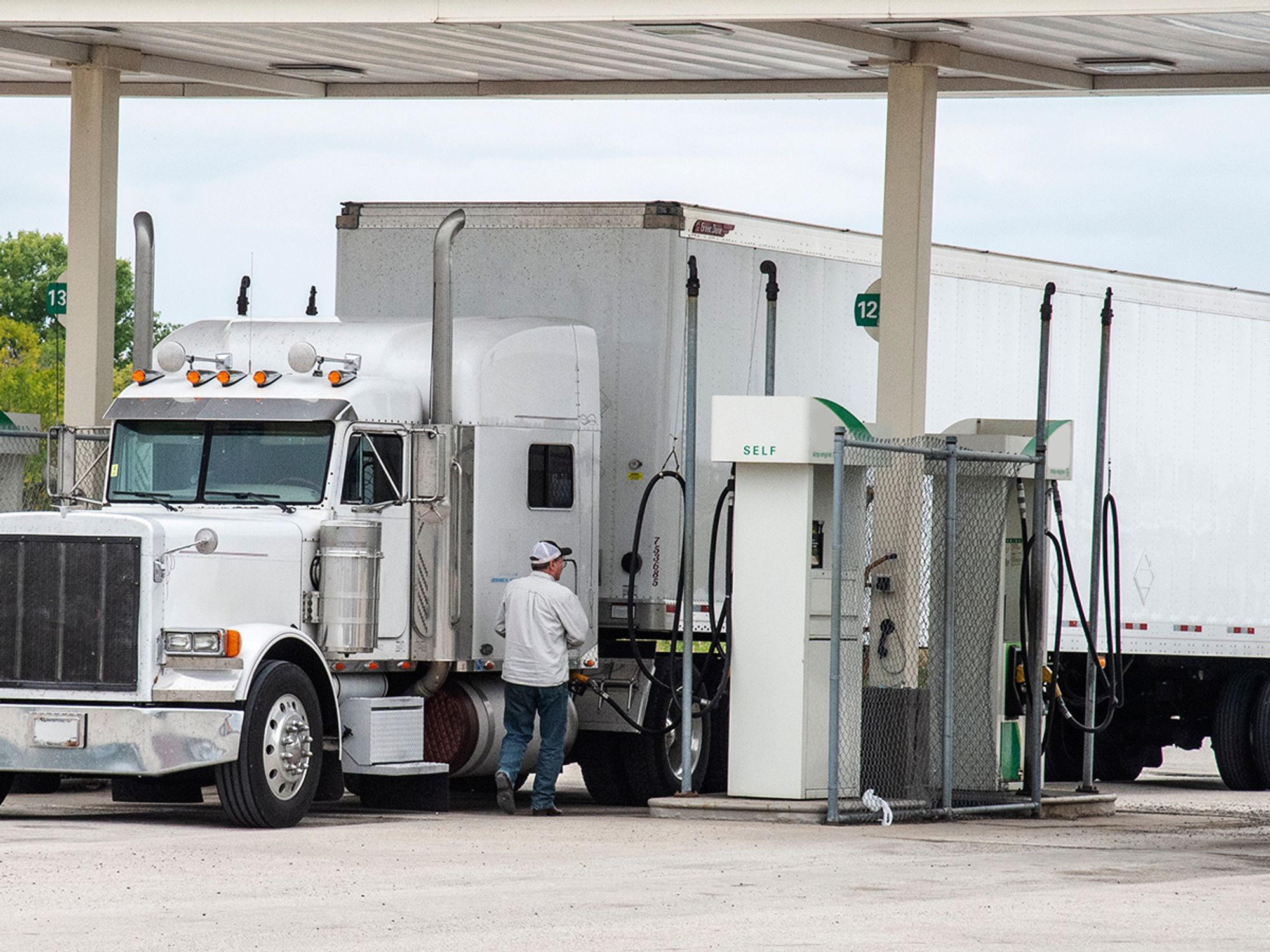Important specifications

- Specifications to manage fuel economy include cruise control, speed, and air intake.
Cruise control
As a starter, companies should plan to specify cruise control on any new equipment, then program the control just under top-governed speed. Drivers will usually willingly give up two to three miles per hour (mph) in return for the freedom of not having to have their foot on the throttle all the time. It’s almost a sure thing that cruise control will save fuel over what the driver can do manually.
Speed
Fuel economy tests have clearly shown that each 1-mile-per-hour increase above 55 consumes 1/10 gallon more fuel per mile. That means that a rig going 65 mph will get 1 less mile per gallon than the same rig going 55 mph, on average. The faster a vehicle goes, the more horsepower it requires and the more fuel it consumes. This doesn’t even account for variances in terrain or other factors, which is why drivers must be attuned to fuel economy.
During the spec’ing process, carriers will want to consider ordering vehicles that operate at the slowest acceptable speeds, not necessarily the fastest.
Air intake system and restrictions
Another spec for carriers to keep in mind is air intake restriction. Too much can cause up to a four percent drop in fuel economy. For the first 80 percent of its life, the typical air filter gets dirty rather slowly, but once it passes that point, the filter plugs with dirt and other foreign substances more rapidly. As this happens, air intake restriction increases, and the engine works harder to pull in air.
Engine manufacturers say the loss in horsepower equals the percentage loss of fuel economy. According to Donaldson Company engineers, increasing air intake restriction from 5 inches to 25 inches (in water) can result in a 3.4 percent horsepower loss. For example, for a truck that runs 100,000 miles per year and gets 6.5 mpg, that works out to 43.5 gallons of fuel every month.
Exhaust backpressure
Too much exhaust backpressure causes a loss in fuel economy, too. Almost all turbocharged diesels have a maximum allowable backpressure of three inches mercury (Hg). By using a 1.5-inch Hg muffler, there can be as much as a 1.5 percent fuel economy improvement. Before spec’ing all new mufflers, however, a motor carrier must be certain that the replacements meet existing or proposed noise standards.
The diesel particulate filters (DPF) and selective catalytic reduction (SCR) systems that are being placed on vehicles to meet the emissions requirements can increase backpressure if not correctly spec’d and maintained. Many of these systems can be ordered with a “tell-tale” device or diagnostic system that notifies the driver (or maintenance through the onboard data system) that the system is approaching the need for service. It is also important that these systems be monitored and maintained as part of routine preventative maintenance (PM) to avoid excessive backpressure.
Fan and fan clutch
The engine cooling fan places a significant load on the engine when it is engaged. The less it runs and the smoother it engages, the better the fuel mileage. How and when the fan engages is determined by sensors in the cooling system and the fan clutch. When looking at engine fan systems and fan clutches, the employer should consider the affect they will have on fuel mileage.
Electronic engines
With regard to spec’ing for fuel economy, all new vehicles come with electronically controlled engines. However, one key issue to consider is what the vehicle owner is going to be able to do with the electronic engine. Does the manufacturer allow the vehicle owner to reprogram the engine control module (ECM)? Is the owner able to download data retained in the ECM? Does the ECM only communicate with proprietary software or hardware? If so, can the owner have access to the software and/or hardware to reprogram the ECM to improve fuel economy?
Updateable software
If a carrier is using electronic engines (or are going to start using them), another consideration when spec’ing with an eye toward fuel mileage is spec’ing engine control systems that can be updated. Engine manufacturers occasionally update their software, and some of these updates can result in an improvement in fuel mileage. This is a different issue than the “reprogramming” discussed earlier. Updating involves the manufacturer being able to install new operating programs or software into the engine computer, not simply “adjusting the parameters” in the existing software.
